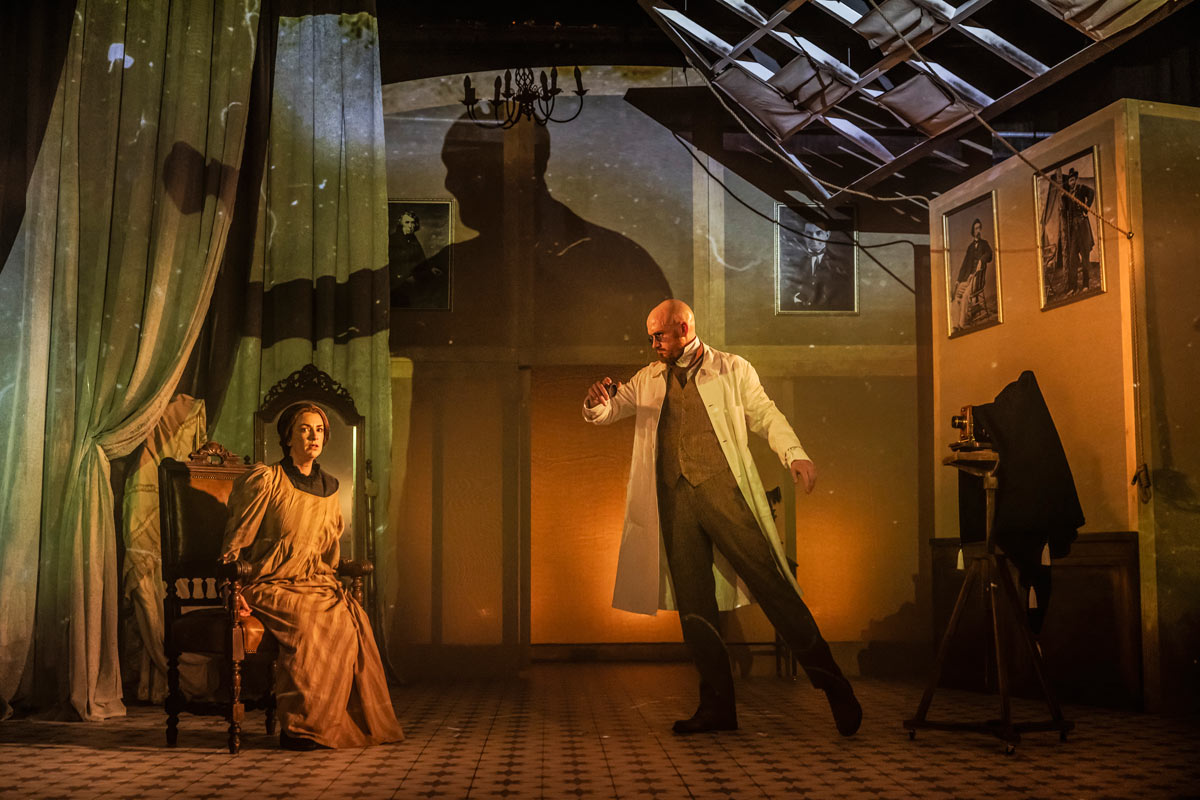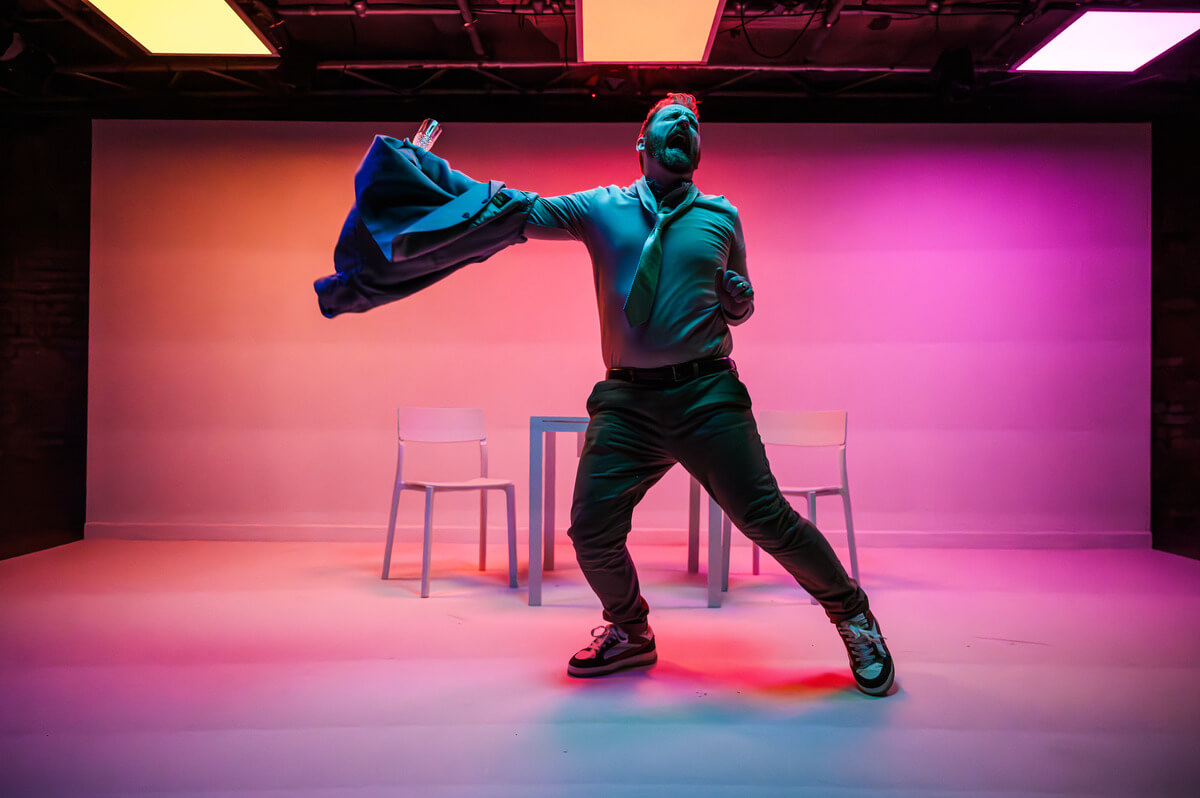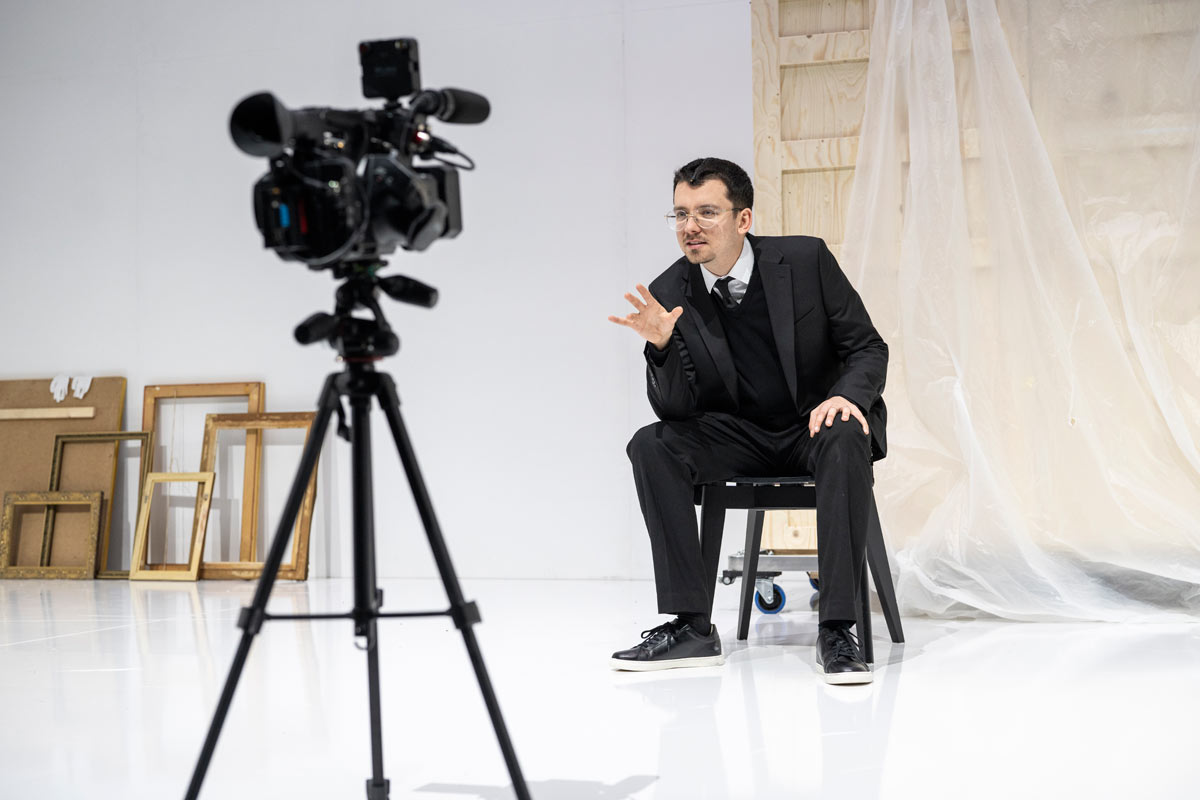Mary (Miriam Grace Edwards) attends one of the new-fangled photographic studios to have her portrait taken by the renowned Mathew Brady (Sam Jenkins-Shaw). His pictures are capturing the likenesses of both the famous figures of the day and those unfortunate souls who have succumbed to the horrors of America’s civil war. More importantly they are capturing public attention and as a result, Mr Brady has begun to believe his own advertising and has developed (no pun intended) a chronic sense of his own self-importance. He blathers repeatedly of his mark on history in bringing eternal life to his sitters (even when he poses soldiers artificially in death, laying face down in the mud with their rifles juxtaposed at artistic angles).
Mrs President, as this First Lady prefers to be addressed, is conspicuously aware of her Southern heritage and how out of place the Washington political elite make her feel. She has endured infant mortality and other hardships and now seeks a portrait to depict her sympathetically for posterity. Through several unsuccessful sittings, we conclude that the matter is proving more of a challenge for the man who believes — despite the limitations of his failing eyesight — that he can generally divine a person’s true identity with his eyes shut. The results of their various sessions prove clumsily rendered and cliché by modern photographic standards, but they serve merely as a device for more surreal deviations, which include a camera discussing studio matters with the posing chair which in turn laments its 333year old oak limbs no longer being part of a living tree! Meanwhile, the growing contempt between the photographer and his oft-standing sitter, suggests there would never have been a second session, nevermind the use of first names and tactile intimacies.
Overall, the piece simply doesn’t gel into a cogent whole, and the ideas rarely move beyond a superficial history lesson. The actors attempt to imbue energy and elevate the dialogue into a more inspiring realm, but despite some interesting set and costume design choices the story feels leaden and uncertain of what it is trying say or conclude. By the end, no-one in the audience seemed to especially care one way or another, which suggested that whilst director Bronagh Lagan had sought to breathe life into the flabby text, MRS PRESIDENT had proved something of a missed opportunity in bringing Mary Lincoln’s story to a wider audience.

 Miriam Grace Edwards and Sam Jenkins-Shaw in Mrs President (credit Pamela Raith)
Miriam Grace Edwards and Sam Jenkins-Shaw in Mrs President (credit Pamela Raith)
